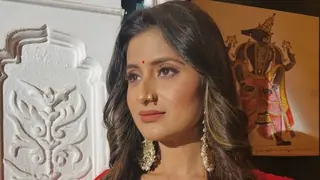
Mahodara (Great-Bellied One)
The legend of Mohasur's creation is an interesting one, evocative of the demon's defining characteristic - delusion. When Shiva was once so lost in meditation that he did not emerge from his trance to help the gods, Parvati assumed the form of an alluring tribal girl and wandered close by, creating disturbance. Shiva opened his eyes and gazed at her, momentarily confused. From that confusion' emanated Mohasura, who was promptly whisked away by Shukracharya. The guru initiated Mohasura into the secret of propitiating the sun god. Mohasura soon received the boon of invincibility from Surya and wreaked havoc in the universe. Surya then advised the gods to seek Ganapati's help. When Mahodara manifested, Shukracharya told Mohasur to surrender or face death. Accordingly, the demon pleaded for mercy. Mahodara spared his life and banished him forever to the underworld.
Avatar in Sanskrit means "descent"; in Hindu mythology, a deity descends from heaven to earth for a specific purpose. Sacred texts like the Ganesha Purana and Mudgala Purana state that Ganesha assumed eight avatars, each manifesting in a different epoch and descriptive of a single attribute. All the avatars had one purpose - to slay a demon.
When Mahodara manifested, Shukracharya told Mohasur to surrender or face death. Accordingly, the demon pleaded for mercy. Mahodara spared his life and banished him forever to the underworld.
Mahodara also destroyed two other demons - Durbuddhi (Negative Thought) and Jnanaari (Ignorance). In this form, He embodies the wisdom of the Universal Spirit.
- Vakratunda (Lord of the Twisted Trunk) Ekadanta (Lord of the Single Tusk) Mahodara (Great-Bellied One) Gajanana (Elephant-faced One) Lambhodara (Long-Bellied) Vikata (Misshaped One) Vighnaraja (King of the World)
- Dhoomravarna (Smoke-Colored)
Aum
Ganesha is identified with the Hindu mantraAum, also spelled Om. The term okrasvarpa (Aum is his form), when identified with Ganesha, refers to the notion that he personifies the primal sound.[91] The Ganapati Atharvashirsa attests to this association. Chinmayananda translates the relevant passage as follows:[92]
(O Lord Ganapati!) You are (the Trinity) Brahma, Vishnu, and Mahesa. You are Indra. You are fire [Agni] and air [Vyu]. You are the sun [Srya] and the moon [Chandrama]. You are Brahman. You are (the three worlds) Bhuloka [earth], Antariksha-loka [space], and Swargaloka [heaven]. You are Om. (That is to say, You are all this).

Some devotees see similarities between the shape of Ganesha's body in iconography and the shape of Aum in the Devangar and Tamil scripts.[93]




























